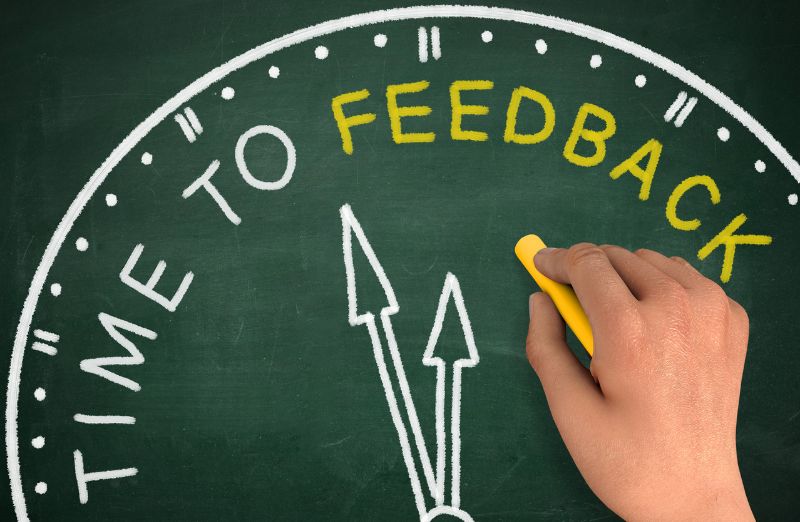Introduction
Effective communication is the foundation of a successful workplace. It fosters collaboration, improves productivity, and ensures that employees are aligned with company goals. As businesses shift towards digital workplaces, leveraging technology to enhance communication has become more critical than ever.
Spinify, a leader in sales performance coaching and gamification, offers AI-driven solutions that transform workplace communication. From real-time feedback to AI-powered coaching, Spinify helps teams stay engaged, connected, and motivated. This article explores how technology, AI, and platforms like Spinify are revolutionizing workplace communication.
The Importance of Effective Workplace Communication
Effective workplace communication is essential for productivity and team morale. Clear communication channels prevent misunderstandings and enhance collaboration. Modern tools like instant messaging and video calls enable seamless interaction, crucial for remote workers. Moreover, understanding verbal, written, visual, and nonverbal communication methods ensures messages are conveyed clearly, with body language and facial expressions playing a significant role.

AI and machine learning have transformed business communication, offering real-time feedback and analytics to optimize strategies and boost efficiency. Asynchronous communication tools facilitate collaboration across time zones, while security measures protect sensitive information. By leveraging these technologies, businesses foster a culture of openness and innovation, overcoming communication challenges and enhancing engagement and success.
How Digital Transformation is Changing Workplace Communication

Digital transformation has fundamentally altered workplace communication by introducing diverse communication methods that cater to different needs and preferences. With advanced communication technology, businesses can leverage tools like project management software, mobile devices, and third-party systems to facilitate seamless interactions among employees. These tools enable effective collaboration across locations and time zones, enhancing productivity and task management. Video calls, instant messaging, and digital tools have improved verbal, written, and nonverbal communication, ensuring clarity and efficiency in business interactions.
However, the benefits of digital transformation come with challenges. Over-reliance on technology can lead to poor communication, misunderstandings, and weakened personal relationships among coworkers. Organizations must balance utilizing technology with fostering a culture that values effective communication. By providing access to the right tools and encouraging open communication, businesses can create an environment where employees feel valued and heard. In conclusion, digital transformation reshapes workplace communication, offering innovative solutions to enhance productivity and collaboration while addressing potential pitfalls to ensure teams remain connected and motivated.
The Role of AI in Enhancing Communication
Artificial intelligence is transforming workplace communication by offering real-time analysis, automating feedback, and enhancing engagement. AI-driven tools improve clarity and efficiency, helping employees communicate more effectively while reducing misunderstandings. Platforms like Spinify utilize AI to provide personalized coaching and gamified feedback, making workplace communication both engaging and productive. Additionally, AI technology offers predictive analytics to anticipate communication trends and potential issues, allowing organizations to address challenges proactively. By integrating AI with existing communication methods, businesses can bridge the gap between traditional and digital communication, creating a more harmonious workplace environment.
Moreover, AI enhances accessibility for remote workers and those in different time zones with features like automated translations and real-time transcription, ensuring language barriers do not hinder communication. This capability not only increases productivity but also helps maintain compliance with international standards. By adapting to unique communication styles and personalizing interactions, AI fosters stronger personal relationships and a more inclusive company culture. In summary, AI is a powerful ally in enhancing workplace communication, offering tools and insights that improve clarity, efficiency, and engagement, leading to better collaboration and success.
Spinify’s AI Coaching Agent: Transforming Communication in Sales and Beyond
Spinify’s AI Coaching Agent enhances workplace communication by providing real-time performance feedback and AI-driven insights. It analyzes communication patterns to suggest improvements, highlight growth areas, and offer instant recognition for strong performance, fostering better engagement and productivity. In a digital workplace where remote work is common, Spinify’s AI adapts to various communication methods—whether through instant messaging, video calls, or email—ensuring employees remain connected and informed. By analyzing communication dynamics, the platform provides actionable insights to overcome barriers like time zones and language differences.

Additionally, Spinify’s AI Coaching Agent supports visual communication by integrating with digital tools for sharing visuals and presentations, ensuring key information is conveyed effectively. The platform also facilitates asynchronous communication, allowing remote team members to access feedback and insights at their convenience. By promoting transparency and open communication, Spinify fosters a strong company culture, encouraging active engagement and ownership of contributions. Personalized communication strategies based on individual needs strengthen personal relationships among coworkers, leading to a more cohesive work environment. In summary, Spinify’s AI Coaching Agent transforms workplace communication by enhancing clarity, efficiency, and engagement, ultimately improving team dynamics and business success.
The Rise of Collaboration Tools in Modern Workplaces

Collaboration tools like Slack, Microsoft Teams, and Zoom have become essential in modern workplaces, facilitating seamless communication with features such as real-time messaging, video conferencing, and document sharing. These platforms support diverse communication methods, including verbal, written, and visual communication, allowing teams to collaborate effectively regardless of location. AI-powered integrations within these tools automate repetitive tasks, enhancing collaboration efficiency and supporting remote work by catering to different communication styles and preferences.
Moreover, these tools prioritize security and compliance, incorporating advanced features like encryption and multi-factor authentication to safeguard information. By fostering open communication and providing spaces for idea sharing, collaboration tools contribute to a positive company culture, promoting inclusivity and engagement. They also support asynchronous communication, benefiting remote workers and teams across time zones by allowing flexibility in interactions. Ultimately, collaboration tools transform the workplace by improving productivity, enhancing employee engagement, and fostering a connected and cohesive work environment.
How Gamification Boosts Engagement and Communication
Gamification has become an influential strategy for enhancing workplace communication by incorporating game-like elements such as leaderboards, challenges, and rewards. This approach taps into the natural human desire for competition and achievement, transforming routine tasks into engaging experiences that promote collaboration and proactive communication. Spinify leverages gamification to drive engagement, helping teams stay motivated and aligned with company goals.
By setting clear goals and providing real-time feedback, gamification helps employees understand their roles and responsibilities more clearly, leading to improved productivity and communication. It can be tailored to suit different communication styles, ensuring inclusivity and fostering a cohesive company culture where all voices are heard. Additionally, gamification encourages employees to share achievements and progress, promoting transparency and building trust among coworkers.

Integrating gamification with existing communication tools enhances overall strategies by improving team collaboration and ensuring important tasks are completed efficiently. This integration allows organizations to track performance and identify areas for improvement continuously. In summary, gamification not only boosts engagement and communication but also contributes to a more dynamic workplace atmosphere, creating a motivated, connected, and productive workforce.
The Power of Real-Time Feedback in the Workplace
Real-time feedback is essential for improving workplace communication and keeping employees aligned with their goals. Immediate feedback allows employees to adjust their approach, correct mistakes, and enhance their communication skills effectively. Tools like Spinify’s real-time leaderboards foster a culture of continuous improvement by keeping teams informed about their performance. This approach not only accelerates professional development but also boosts morale and engagement, preventing minor misunderstandings from escalating into significant issues.

Moreover, real-time feedback promotes transparency and trust within teams. Employees appreciate knowing where they stand, which encourages open communication and collaboration. The integration of real-time feedback with communication technology enhances productivity by streamlining processes and ensuring employees receive the information they need to succeed. By tailoring feedback to individual communication styles, managers can foster stronger personal relationships and a more cohesive team dynamic, ultimately driving continuous improvement and success.
Data-Driven Decision Making in Workplace Communication
In today’s digital age, data-driven decision making is essential for refining workplace communication strategies. By leveraging real-time insights and analytics, businesses can identify communication bottlenecks and tailor their strategies for maximum efficiency. Spinify provides managers with data-driven insights to track performance, measure engagement, and optimize communication methods. This approach allows organizations to customize their communication strategies to meet the diverse needs of their workforce, ensuring messages are delivered effectively and reducing misunderstandings.
Moreover, data analytics reveal trends and patterns, enabling businesses to identify peak communication periods and adjust strategies to maximize engagement. This proactive approach not only enhances communication but also boosts productivity and efficiency across the organization. By tracking key performance indicators such as response times and employee satisfaction, businesses can assess the effectiveness of their communication strategies and make informed decisions to optimize them further. In conclusion, data-driven decision making is a powerful tool for enhancing workplace communication, improving employee engagement, and driving business success.
Enhancing Remote Team Communication with Technology
Remote teams face unique communication challenges, often resulting in misunderstandings and feelings of disconnection. Technology bridges these gaps with real-time messaging, video conferencing, and AI-driven feedback, enabling remote teams to stay engaged and aligned. Spinify’s solutions, featuring interactive leaderboards, gamified progress tracking, and AI-powered coaching, enhance communication by providing tools that cater to diverse needs and preferences.
Asynchronous communication platforms such as emails and project management software allow team members to collaborate flexibly, accommodating different time zones. Mobile devices and third-party software further enable seamless connectivity, ensuring productivity and alignment with company goals. Additionally, virtual team-building activities and regular check-ins foster a sense of belonging and maintain strong personal relationships among remote workers, creating an open culture where employees feel valued.
Maintaining compliance and security in communication processes is crucial, with advanced features like encryption and multi-factor authentication safeguarding sensitive information. In conclusion, technology plays a vital role in enhancing communication for remote teams by providing the necessary tools and platforms for seamless interactions. By leveraging these advancements, organizations can ensure their remote teams remain connected, productive, and engaged, driving business success.
Breaking Down Silos: How Tech Improves Cross-Department Collaboration
In large organizations, communication silos often hinder efficiency and lead to duplicated efforts. Technology addresses these issues by integrating communication platforms across departments, ensuring seamless information flow. Tools such as project management software and digital communication platforms enable real-time sharing of information, crucial for aligning departmental goals and strategies. AI-powered dashboards and analytics enhance transparency and collaboration, providing insights into communication patterns and identifying potential areas for improvement. This data-driven approach not only enhances communication efficiency but also supports decision-making and strategic planning.

Moreover, breaking down communication silos with technology fosters a more inclusive company culture. By encouraging open communication and collaboration, employees across different departments feel more connected and engaged with the organization’s mission and values. This sense of unity leads to increased productivity, innovation, and a stronger company culture overall. In conclusion, technology plays a pivotal role in dismantling communication silos and promoting cross-department collaboration, creating a cohesive and efficient work environment that drives success and growth.
Leveraging CRM Integrations for Smarter Communication
Customer Relationship Management (CRM) systems like Salesforce, HubSpot, and Pipedrive are crucial for managing client interactions. When integrated with AI-powered platforms like Spinify, CRM data becomes even more potent. Real-time performance tracking and automated feedback enhance communication between sales teams and clients, leading to stronger customer relationships. This integration allows for personalized communication strategies, ensuring interactions are relevant and tailored to client needs. By leveraging AI-driven analytics, businesses can anticipate customer demands and proactively address potential issues, improving customer satisfaction.
Moreover, CRM integrations streamline internal communication by centralizing customer information, reducing communication errors and enhancing collaboration across departments. Automated alerts keep sales teams informed about client activities, ensuring prompt responses. Additionally, CRM systems facilitate communication across multiple channels, including email and instant messaging, maintaining consistent messaging and improving engagement. This multi-channel approach not only boosts customer engagement but also enhances the efficiency of communication processes. In summary, CRM integrations combined with AI platforms like Spinify create effective communication strategies that foster long-lasting customer relationships and improve internal collaboration.
The Role of AI in Automating Internal Communications

AI-powered chatbots and virtual assistants are revolutionizing workplace communication by handling routine inquiries, automating meeting schedules, and providing instant coaching insights. This automation allows employees to focus on strategic tasks, enhancing both efficiency and the overall employee experience. By freeing up valuable time, AI solutions enable employees to concentrate on critical projects and innovative solutions, leading to increased productivity and engagement. Moreover, AI-driven tools adapt to the unique needs of each organization, offering personalized solutions that cater to specific communication styles and preferences. This adaptability ensures that all employees receive the support they need to excel in their roles, regardless of their communication preferences.
Additionally, AI-powered platforms seamlessly integrate with existing communication tools, creating a unified system that enhances collaboration across teams. By connecting different communication channels, AI ensures smooth information flow, reducing miscommunication and fostering team cohesion. This integration is particularly beneficial for remote workers who rely on digital tools to stay connected. Furthermore, AI supports data-driven decision-making by providing real-time insights and analytics, enabling organizations to monitor communication effectiveness and make informed adjustments. By embracing AI technology, businesses can optimize their communication strategies and create a more connected, collaborative workplace, driving success and growth in the digital age.
Improving Employee Recognition Through Technology
Employee recognition is vital for workplace satisfaction and motivation. Technology enables real-time celebration of achievements, boosting morale and engagement. Tools like Spinify use gamified leaderboards, automated rewards, and AI-driven insights to highlight accomplishments and reinforce a culture of appreciation. In a remote work environment, technology bridges gaps by facilitating instant recognition through various communication channels, enhancing visibility and transparency.

Moreover, technology supports personalized recognition strategies tailored to individual preferences, fostering stronger relationships and an inclusive company culture. By integrating recognition technology with existing tools, organizations promote a sense of community and shared success. This encourages employees to strive for excellence, leading to increased productivity and engagement. Ultimately, technology-driven recognition aligns with organizational goals, creating a motivated and satisfied workforce that drives success and growth.
Transform Workplace Communication with Spinify
Technology plays a vital role in enhancing workplace communication, and AI-driven solutions like Spinify are at the forefront of this transformation. With gamification, real-time feedback, and AI-powered coaching, Spinify helps teams communicate more effectively and achieve their goals.
Want to see how AI-driven coaching can improve workplace communication?
👉 Book a demo with Spinify todayand experience the future of workplace communication!




